Re-posting Note: this post covers the family of my paternal grandmother’s maternal grandfather, Albert C. Huff (1854 - 1936). I think I tested all of the links to make sure they worked, but let me know if you find one that doesn’t.
Sample-More Meats - a Businesswoman's Story
Note: I'm making some assumptions to turn all of these disparate facts I have into a story. If you find mistakes, comment or email me, and I'll update it!
Albert C. Huff was born in Ohio just 6 years before the beginning of the Civil War. His father moved the family to Savonburg, Kansas, not long after it was founded in 1879. There, Albert met and married Rosa Edith Murray. They raised seven children in Savonburg, but somewhere around 1905 or so, the family felt the pull to move to the Arizona territory. Based on the postcards and letters between Glendale, Arizona, and Savonburg, they didn't all move at once, but by 1910, most of the clan appeared on the federal census records in Glendale.
Perry Huff was the eldest of Albert and Rosa's seven children. He and his wife, Pearl, along with two of his three sisters, Bertha and Iva, and their husbands, were probably the first to relocate. Perry started a meat market on Glendale Avenue in partnership with his brother-in-law, Bertha's husband, Roy Sample. It was one of the first businesses in the young town: the Huff/Sample Meat Market.
This postcard addressed to "Miss Merl Huff" (my great-grandmother!) appears to have been written by Perry - based on the greeting "Hello Sis" - it shows the meat market, and possibly its owners. The "R.S." at the bottom may refer to Roy Sample, on the left; Perry ought to be the other man in white to the right of the slicer; and "Bill" might refer to the other man to the far right. [1]
Sadly, Perry's young wife, Pearl, did not survive to see his success. She died in 1907, possibly in Las Vegas, New Mexico, during the move from Kansas. Perry and his infant daughter, Doris, were living in his parents' new Arizona home by the time of the 1910 Census, but the family's correspondence indicates that his health was giving out, too. When Perry died in 1911, Doris was sent back to Kansas where she was raised by Pearl's mother, Lucy Enos.
After Perry's death, Perry's other brother-in-law, Harry More, took over the business. The Sample & More Meat Market thrived, and so did all of the young Huff families living there in the young state of Arizona.
Harry and Iva had a son, Phil, who was born in 1909. Roy and Bertha had Thelma in 1909 and a boy named J.L. in 1914. By this period, Albert Burton Huff (everyone called him Burt) had moved to Glendale, and he and his wife Mary had four little girls: Maurine (1908), Maxine (1910), Bruce (1917), and Ezell (1919) - who would grow up to have quite a few adventures of her own!
After President Taft signed the bill establishing Arizona's statehood, Phoenix became the new state capital, which spurred growth in the surrounding towns, as well. Glendale grew, along with the Huff families, and they were all part of what changed the area from a wild frontier into something more like a city.
It might not seem that wild when you're looking at some old photos of a butcher shop and reading a list of babies' birthdays, but it's worth remembering that between the births of young J.L. Sample and Bruce Huff, General Pershing spent a year trying to catch the Mexican outlaw, Pancho Villa - and there was every chance that chase could have turned north into Arizona. The migrating Huffs also had to pass by the famous Fort Apache on their 1,200-mile journey from Kansas. Located not quite 200 miles to the east of Glendale, it operated until 1924, when the native Americans were granted U.S. citizenship - even after that, the possibility of unrest and some kind of "Indian attack" of Old West lore was a real, potential threat in the back of their minds.
In spite of the risks of frontier life, Arizona was also a place that was looking ahead. After having removed parts of their original constitution - containing things like direct election of senators, women's suffrage, and other reforms - things which were delaying the passage of their statehood bill, Arizonans turned around and put those parts right back in a referendum election, effectively making the Huff sisters voters earlier than many of their contemporaries in the rest of the country.
And so it goes - a simple photo of a parade of old cars down an empty street under a big desert sky turns out to be a story about brave, ordinary people, carving a home out of the dirt, setting up shop, and trying out the wonders of a new age while living in the setting of the old one. Knowing that these people came to the area in covered wagons barely a decade before, and built all of this in the heat and the dust, with the possibility of death from outlaws, displaced indigenous people, or unnamed diseases around every corner makes this a triumph.
Life being what it is, though, Bertha and her two youngsters lost Roy just before Christmas in 1918. [2] This seems to be when Bertha began to take charge of more of the business, and by the time she re-married in October of 1920, she was described in the local newspaper article about the event as, "a well-known business woman and property owner in Glendale,"
The man she married, Earnest Kinman, was a well-liked and outgoing friend of the family. His best friend was my great-grandfather, Dick Witter, who had only married Bertha's little sister, Merle, a couple of years before - before getting himself drafted and going off to join the Army, of course.
Harry More would pass away in 1925, and after that, his widow Iva moved on to California with Phil, leaving the meat market to Earn and Bertha to run. By the time Bertha died in 1965, the Wild West was 100 years in the past, the pioneer families were all but gone, and meat markets were being replaced by supermarkets. But along the way, the family had grown, loved, lost, fought, and eventually became a small background part of history.
As we all do, if we're lucky enough.
1. My identifications of the men in the postcard of the Meat Market are pure speculation. I am guessing based on what is on the back of the postcard. The Glendale Arizona Historical Society has a photo of Roy outside the market with an Albert Huff, but they identify Albert as Roy's father-in-law. I think the man in the photo is actually his brother-in-law, Albert Burton (who went by "Burt"); Burt's father was Albert C Huff, and this is what he looked like:
2. Despite the timing of Roy's death and his eligibility for the draft, I don't have any indication that he served in the war. Of course, his brother-in-law, Dick Witter, did - but that's a different post!
3. The scanned "meat tray" above is of an original sheet saved by my great-grandmother, which was photocopied by her daughter, Nancy Witter Callin, and annotated with the historical notes you see in this picture. I used her notes as a sort of timeline for putting this essay together and filled in other facts based on official records, postcards, and letters.
As always, I love to hear from fellow descendants. If you’ve got any of these folks in your family tree, say hello!
I’m always open for suggestions - subscribe to get updates or corrections.




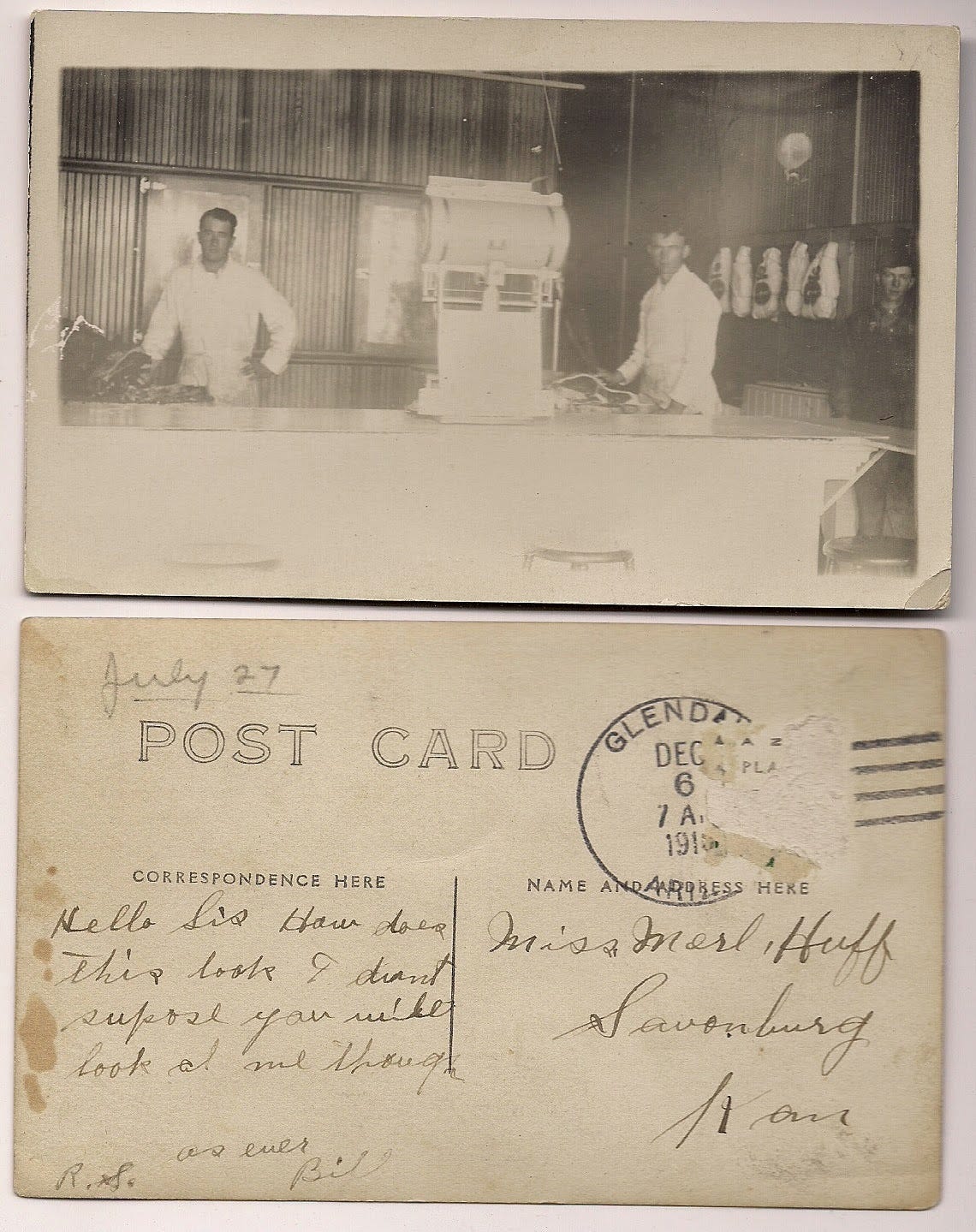
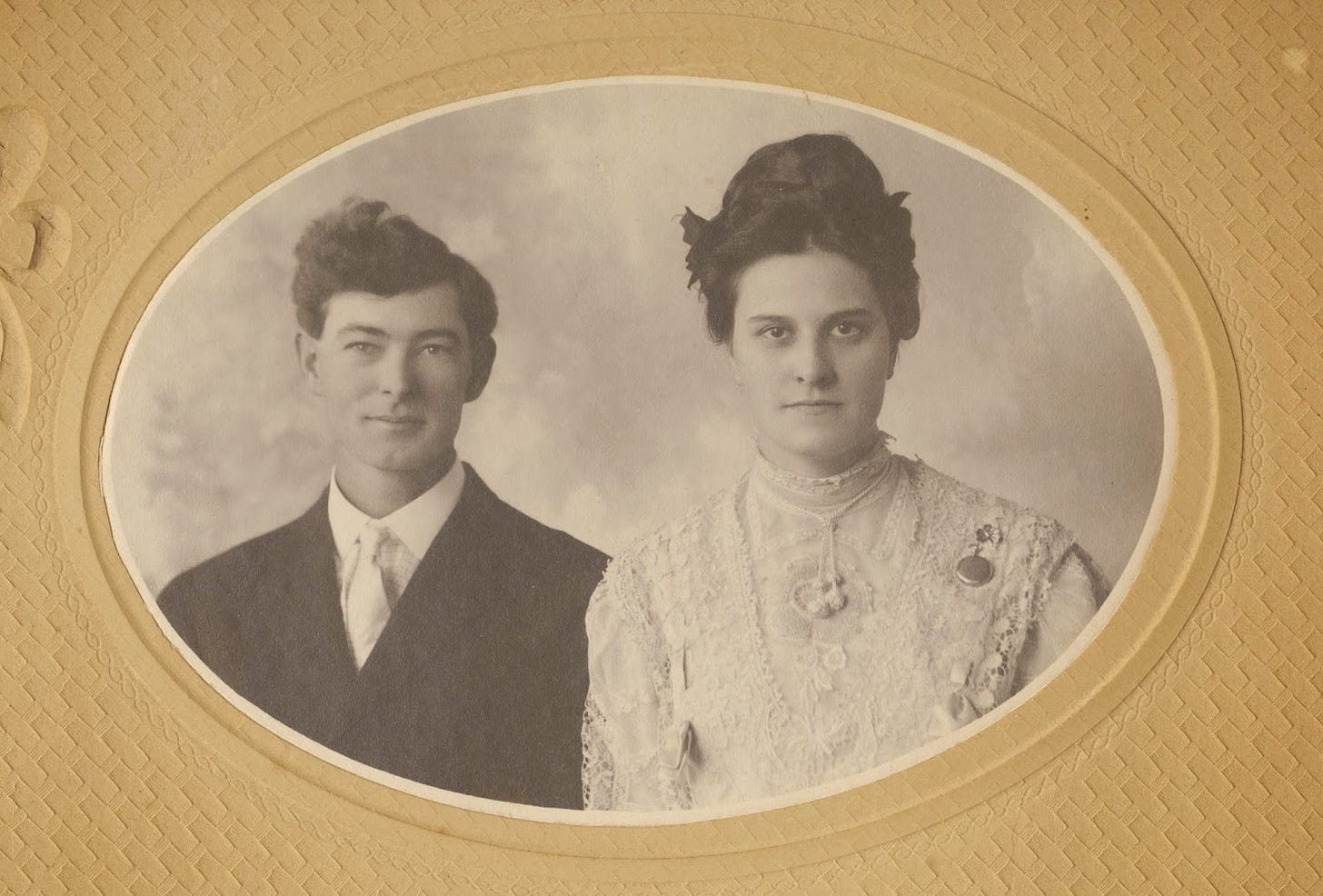


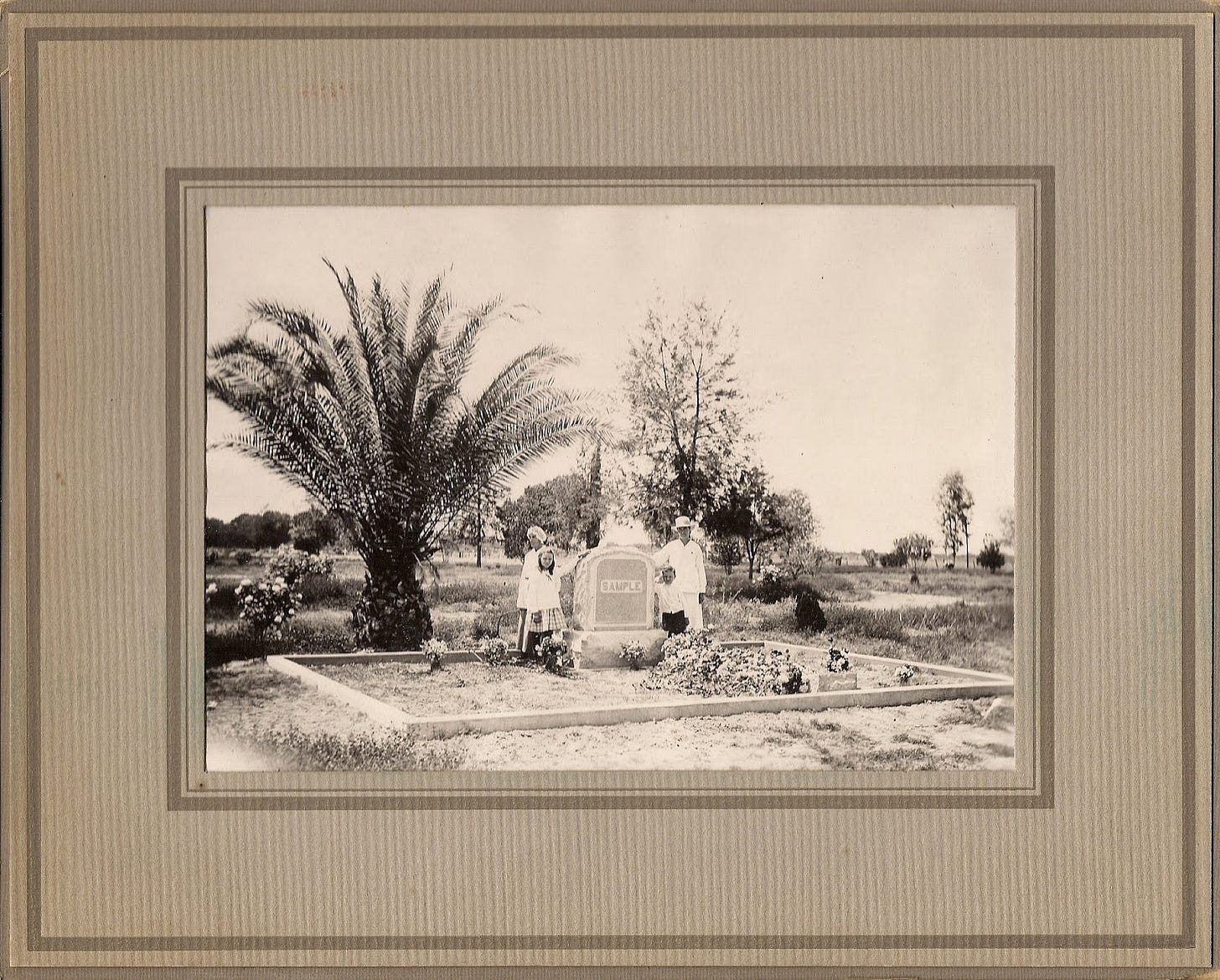
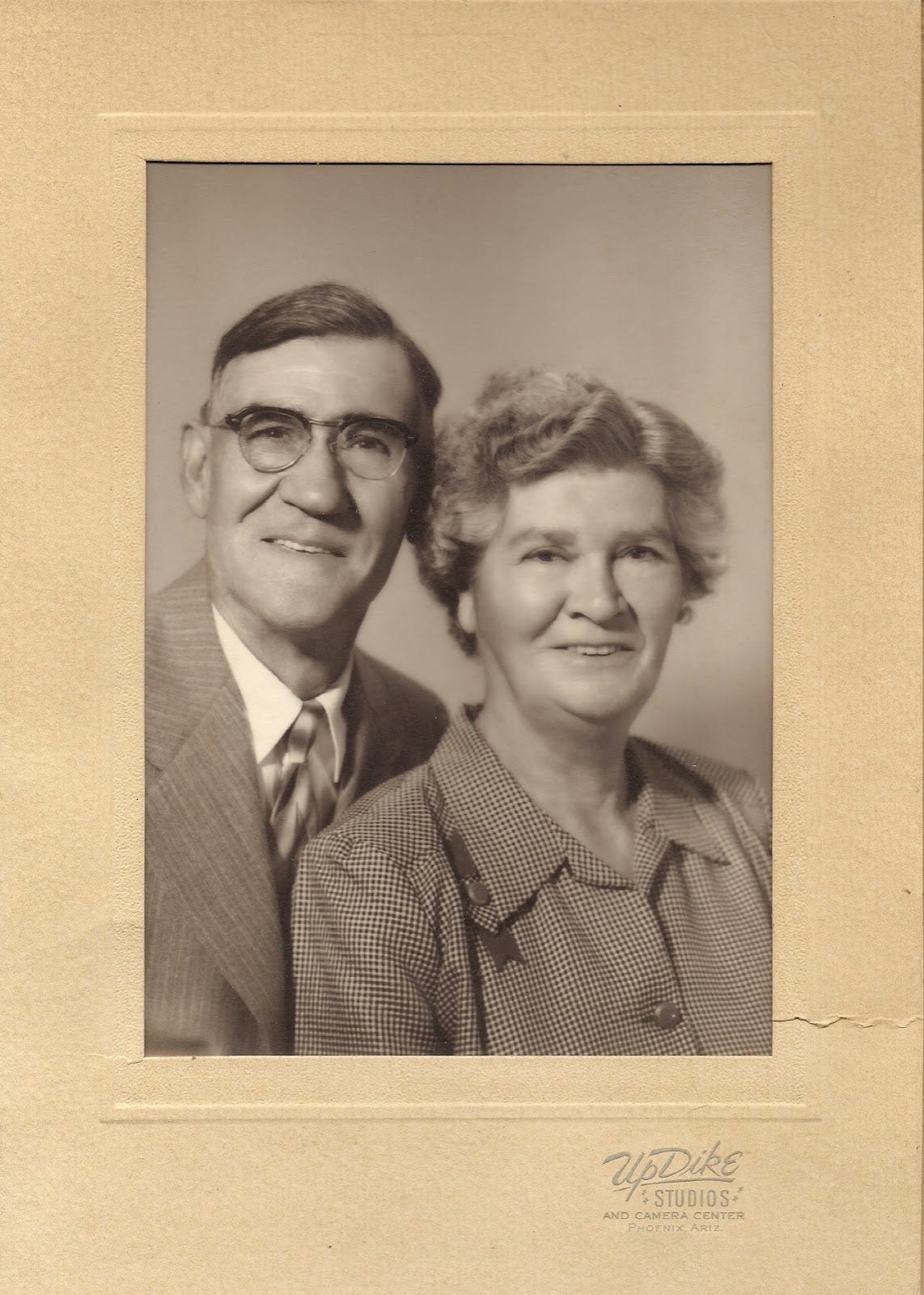
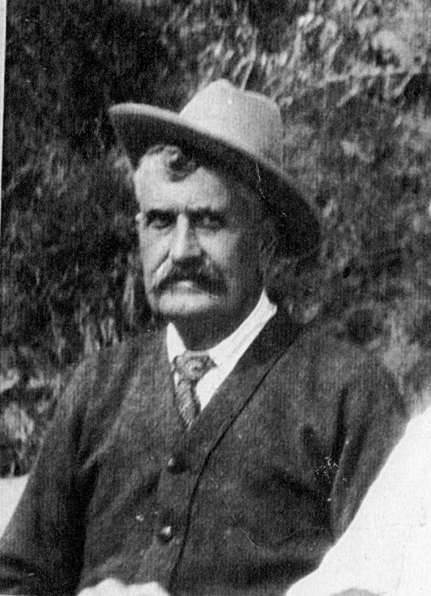

I love that you include context. How moving to Arizona was a 1,200-mile journey and there were risks along the way.